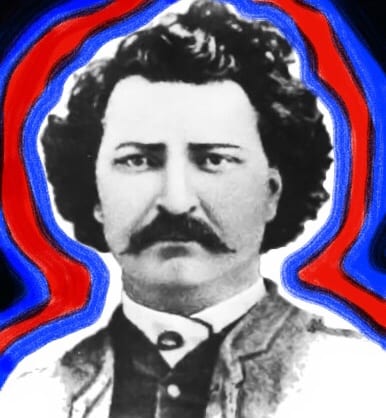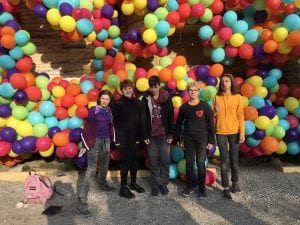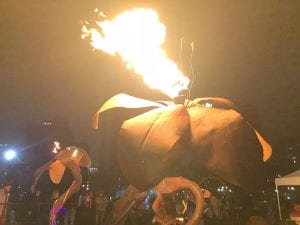Welcome back to another Humanities unit! Continuing with our learning about Canadian history, we recently completed a unit focusing on the creation of our country we know as Canada today; who played the largest roles in the history of it, under what circumstances all of Canada was united, and the indigenous peoples who were forced to give up their homes for the strange new people arriving. Our driving question was: How does power alter relationships between individuals and societies?
We began this unit learning about the Métis, who were indigenous peoples of Canada before it was so; they lived on Rupert’s Land, or what we now know as Manitoba. The Métis were of mixed ancestry, both European and First Nations, and most spoke French. A person who was a point of focus in this unit was the Métis Louis Riel, a prominent figure known for fighting for the rights of the indigenous peoples, indirectly aiding the completion of the CPR, joining Rupert’s Land (Manitoba) with the Dominion of Canada, and bringing his people hope in times of crisis.
We read a graphic novel about Riel called “Louis Riel: A Comic Strip Biography”, where it explained the most relevant parts of his life through an intriguing and artistically captivating story of power. Riel’s leverage was so important to the First Nations because they tried desperately for their voice to be heard by the government, but were often ignored. Riel assisted in negotiating with the government, leading armies into battle, and using his power for the greater good of his people. Learning about Riel, we also learned more about the mistreatment of the indigenous peoples, and how they slowly lost their land to the Canadian government. For example, a small assignment that we completed was about Treaty 6, where we had to write a story-like take on the events that took place at this signing of one of the many treaties where the First Nations were forced to give up their land in order to survive.
“Alexander Morris shivered as he prepared for the following debate. The last time, he thought. When will these people learn that they can’t get their way? Their idea of freedom, it was so different than normal people’s. How could they live with no structure in their lives? Everything revolves around money, and guns. That’s just how it is in Canada now. How could they go on chasing their idealistic fantasies about a nation not bound by social class, or the value of this pelt, or the look of a shiny sleek new gun? It was so obviously time to move on. Their land was now the governments’.”
As you can see, this small excerpt is written as a story, from the perspective of a watchful eye, adding detail to depict a factual event in history eloquently. This was another focus of our unit, as the big project that we completed required us to choose a powerful person pre-confederation who impacted a group of people through their power or disempowerment. We then had to write a story about them, and make an animation. I chose Cuthbert Grant, who I knew nothing about, and had heard nothing of. When I began reading about him, it was evident that he was someone who empowered a group of people, specifically Métis. Cuthbert himself was also Métis.
Another huge part in Canadian history is the Hudson’s Bay Company, and the trade between it and the indigenous population. Many people relied on the exchange of furs, pelts, and a special food called pemmican. Cuthbert Grant worked for the rivals of the HBC: the NorthWest Company, and when a supply of pemmican was stolen from the NWC, he lead a group of Métis to retrieve it. This is where I specifically see his power with a group of people come into play. He lead the Métis into a battle bravely. Though it is debatable whether or not the actions taken at the battle were the most ideal, as it was very ruthless, the important and recognizable part of this event was that he took charge and exhibited leadership, power and guidance for a certain group. Power is what shapes a person’s imprint in history, or their display of power; the more people it affects, the more profound impact they will have in our books and memories. I told Grant’s tale of power through a storytelling narrative, and added in some dialogue. This helps bring his story to life.
To accompany our stories, we created animations once again, as I mentioned. I love making animations, so this was a super fun part of our project. Creating something with visually and technologically relative elements was part of the curriculum for our unit: “Innovative Designer – Use technology within a design process to identify and solve problems by creating an imaginative solution.” (This was our ISTE standard, or a curricular competency.) Making animations suits this competency quite well. We started with a storyboard, breaking down the stories we wrote and picking out the frames we wanted to include in our animations. This merely involves quick sketches of the important events, and a small amount of text for explanation.
After completing our storyboards, we started in on the drafts for the animations. I used the app FlipaClip, which I have used multiple times before. I definitely recommend using this app if you ever want to make an animation. It’s simple to use, but very versatile and you can create awesome things. I used my favourite drawing app Procreate for the backgrounds, and then imported them into FlipaClip to add the animation on top of the background. After I finished making multiple frames of animation (the most tedious part), I pieced them all together in iMovie and added voice-overs. I had a difficult time finding the right music, but eventually I found something that was fairly nutral. My voiceovers were a bit too quiet, and I had to re-record them later on, during the improvements on our first drafts. I fixed a couple other little things as well. Finally, we had a viewing party on Friday where we watched all of our animations! (The link to mine is at the top of this post.)
Reflecting on this project, I realize that I knew very little about Canadian history, and the people who shaped our country. It has grown so much since merely 100 years ago, which appears like an entire different universe. Thinking that Louis Riel actually existed and was more than the character in our graphic novel seems kinda crazy! Every single one of the powerful individuals or groups of people who shaped our society, through violence or compassion or willpower; they all matter, they’re all important for us to recognize, whether they’re someone who used their influence for good or for bad. They created the Canada that we know today.
Overall, this was a great unit. I can’t wait to journey through our upcoming Humanities quests!
Image credits here.














Leave a Reply